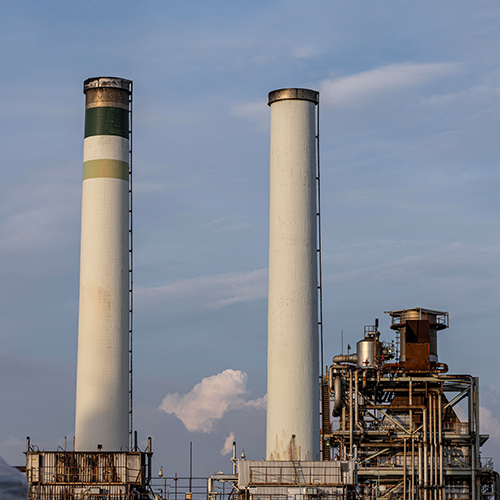 Steel and Power Industries
Steel and Power Industries
-
The drive towards a sustainable and low-carbon future is steering industries towards innovative solutions. At the forefront of these strategies is CCUS technology, which is gaining prominence in sectors like steel production and power generation.
Benefits in the Steel Sector
- Decarbonization: A potential massive reduction in greenhouse gas emissions.
- Energy Efficiency: Combining CCUS with technologies like hydrogen-based reduction can improve energy efficiency in steelmaking.
- Cost Competitiveness: With evolving carbon pricing strategies, CCUS may drive cost benefits, especially in regions with strict emission norms.
Power Industry
With the power sector standing as a major CO2 emission source, integrating CCUS offers a robust solution.
-
Capture: At power plants, CO2, produced during fossil fuel or biomass combustion, can be captured. Methods include pre-combustion, post-combustion, and oxy-fuel combustion, each suited for specific plant and fuel types.
-
Transport: Post-capture, CO2 is transported, generally through pipelines, to storage or utilization sites. Other transportation modes might include shipping for challenging terrains or long distances.
-
Storage: This involves sequestering CO2 into deep geological formations like spent oil and gas reservoirs or saline aquifers. Alternatively, CO2 can find utilization in EOR, synthetic fuel production, or building materials.
Benefits in the Power Sector
- Decarbonization: CCUS offers a promising route to significantly reduce emissions in power generation.
- Flexible Transition: The technology facilitates a smoother shift to low-carbon energy, allowing the existing fossil fuel infrastructure to remain operational but environmentally friendlier.
- Economic Benefits: CCUS can stimulate job growth across its infrastructure and potentially open new revenue avenues by repurposing captured CO2.
- Implementing CCUS in these sectors signifies a balanced approach to meet energy needs while making substantial strides in battling climate change.
